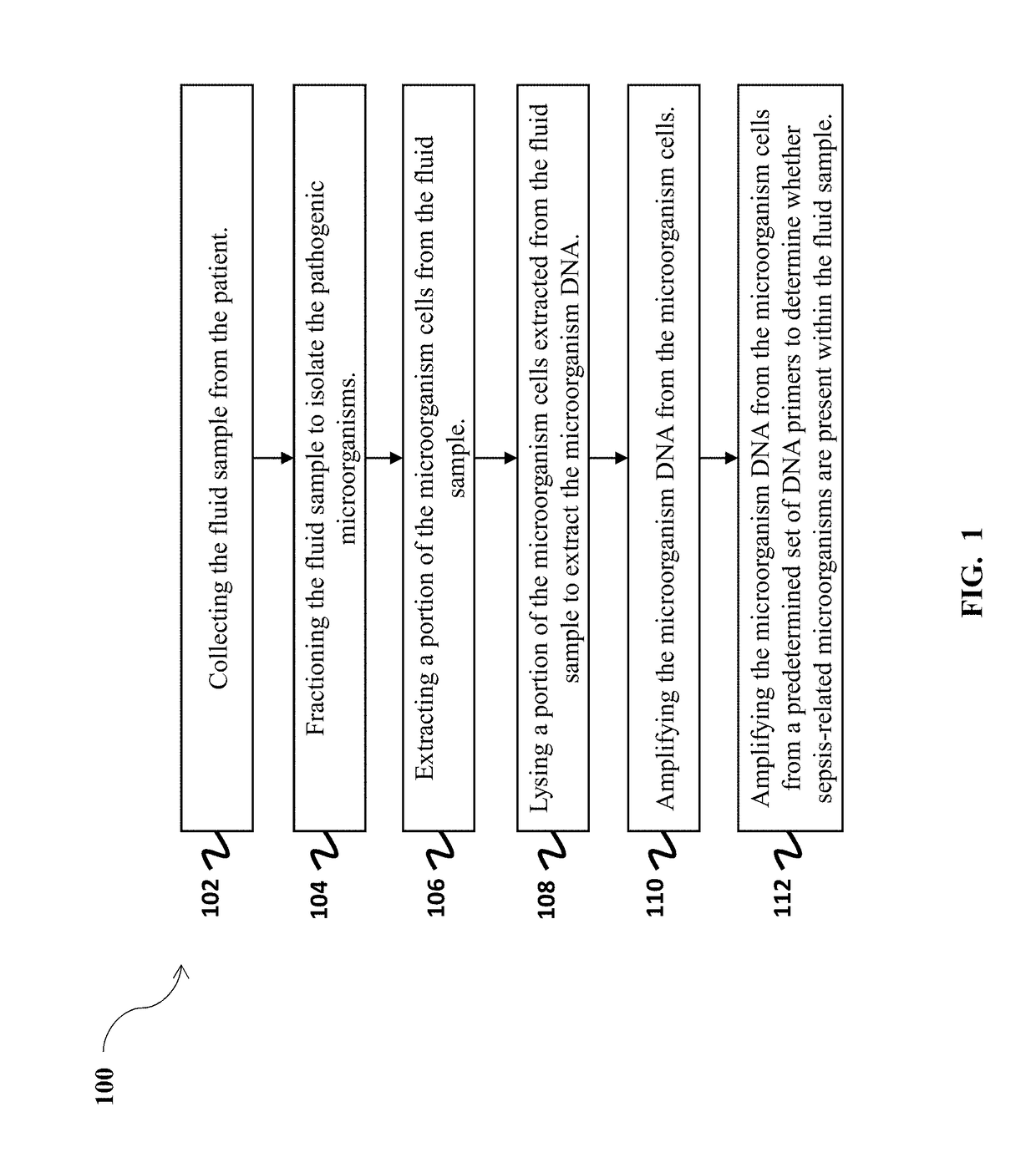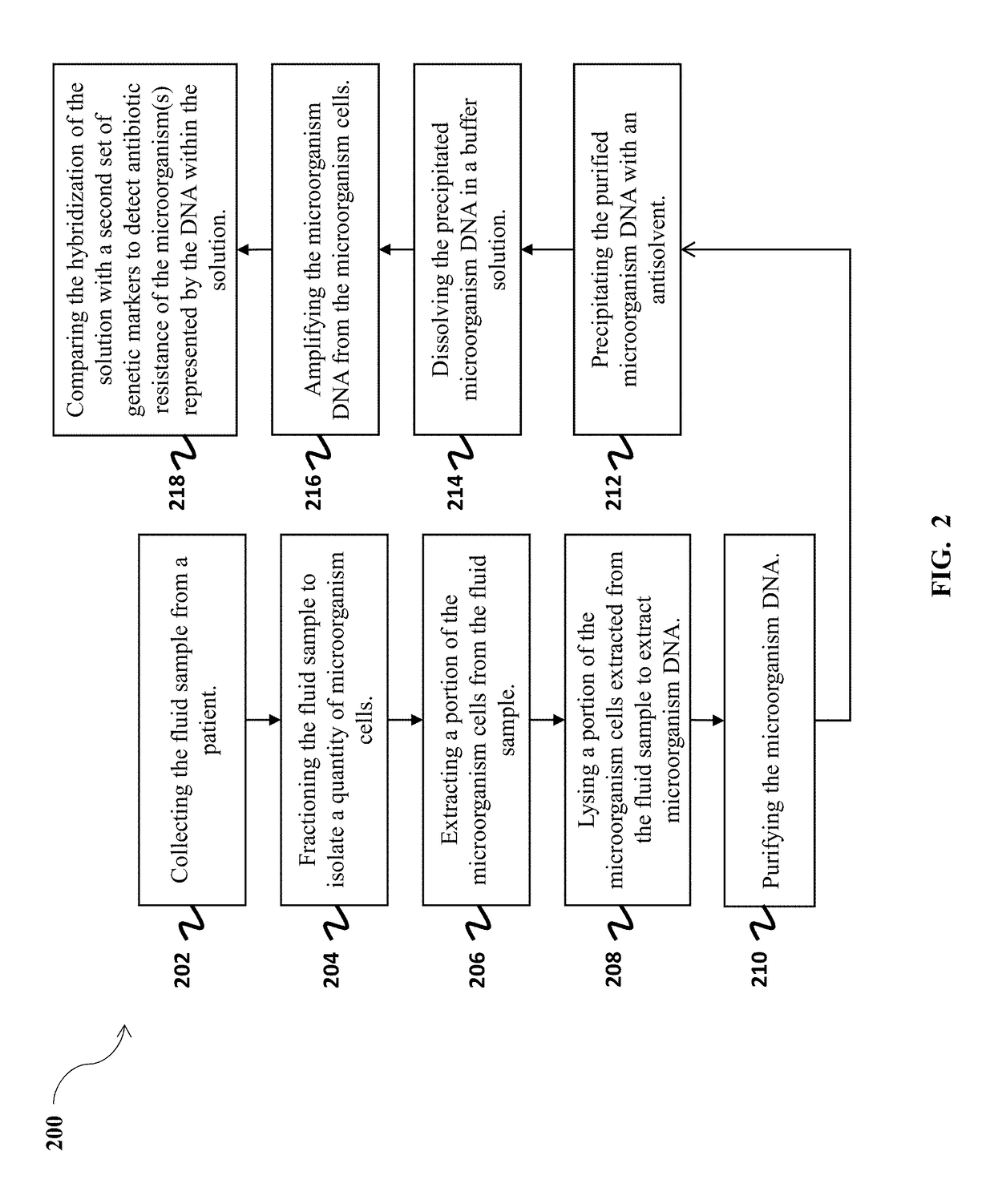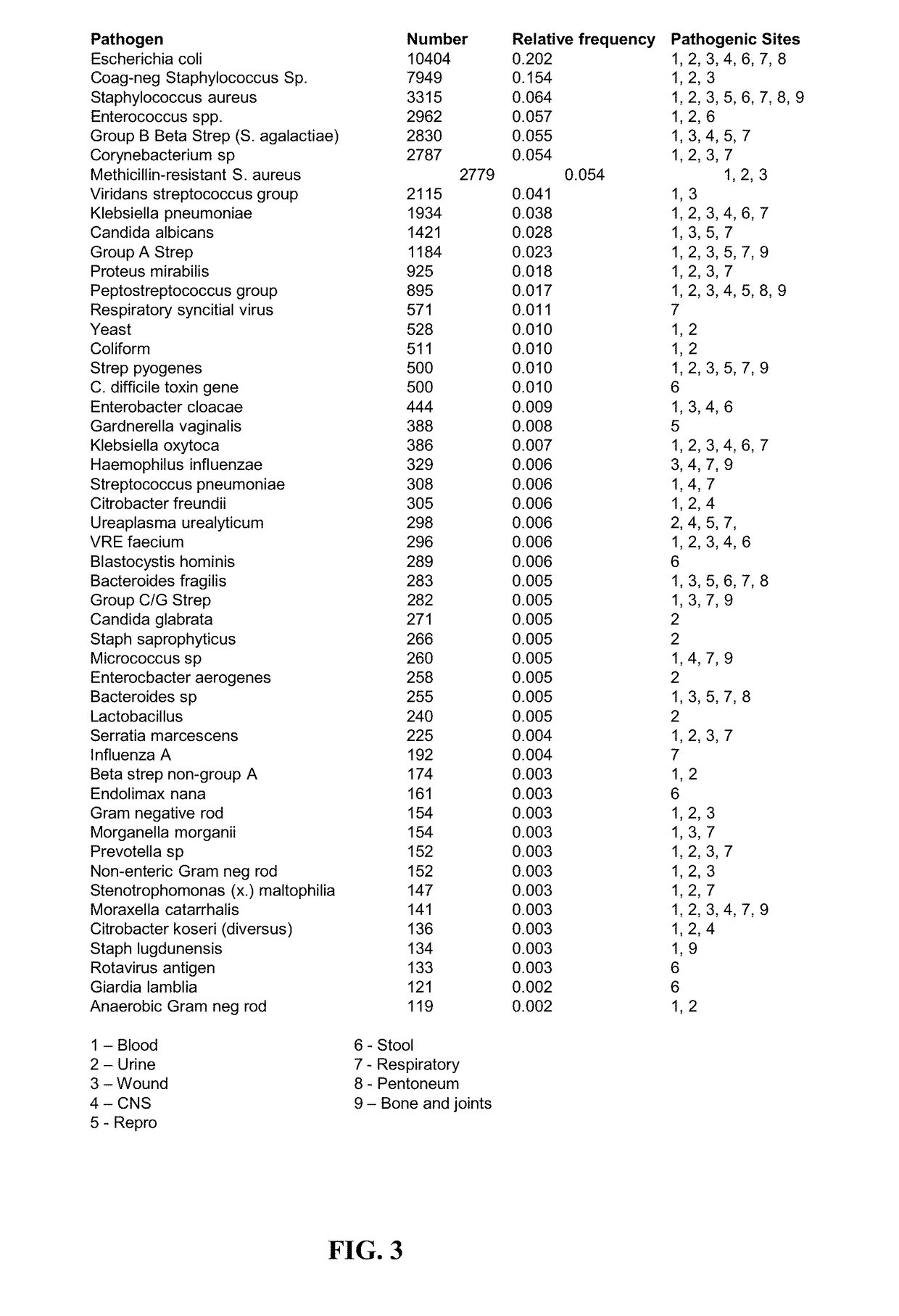Method for detecting bacterial and fungal pathogens
a pathogen and bacterial technology, applied in the field of pathogen detection, can solve the problems of affecting the care provided, affecting the care of the critically infected, and consuming a lot of health care resources, and already sick or immunocompromised can fall victim to infection
- Summary
- Abstract
- Description
- Claims
- Application Information
AI Technical Summary
Benefits of technology
Problems solved by technology
Method used
Image
Examples
examples
[0107]A series of clinical fluid samples were obtained from numerous different patients over the course of months. These clinical fluid samples were of many different types, as is described in greater detail below. Moreover, their volumes were also of different sizes, as is also described in detail below. These clinical samples were analyzed using various embodiments of the methods described herein and in greater detail below.
[0108]In total, 239 samples were collected across culture types (31 blood, 122 urine, 73 mucocutaneous wound / swab, 11 sputum and two stool samples) from 229 consecutively enrolled patients with suspected clinical infection with samples analyzed both at the hospital and by one embodiment of this disclosure. The overall sensitivity of the EBT method and the Thermocycler method was 76.4% with a specificity of 98.3%. The positive predictive value for all samples was 63.5% and negative predictive value was 99.1%. The results indicate the LAMP-based embodiments allow...
PUM
| Property | Measurement | Unit |
|---|---|---|
| Temperature | aaaaa | aaaaa |
| Temperature | aaaaa | aaaaa |
| Temperature | aaaaa | aaaaa |
Abstract
Description
Claims
Application Information
 Login to View More
Login to View More - R&D
- Intellectual Property
- Life Sciences
- Materials
- Tech Scout
- Unparalleled Data Quality
- Higher Quality Content
- 60% Fewer Hallucinations
Browse by: Latest US Patents, China's latest patents, Technical Efficacy Thesaurus, Application Domain, Technology Topic, Popular Technical Reports.
© 2025 PatSnap. All rights reserved.Legal|Privacy policy|Modern Slavery Act Transparency Statement|Sitemap|About US| Contact US: help@patsnap.com



